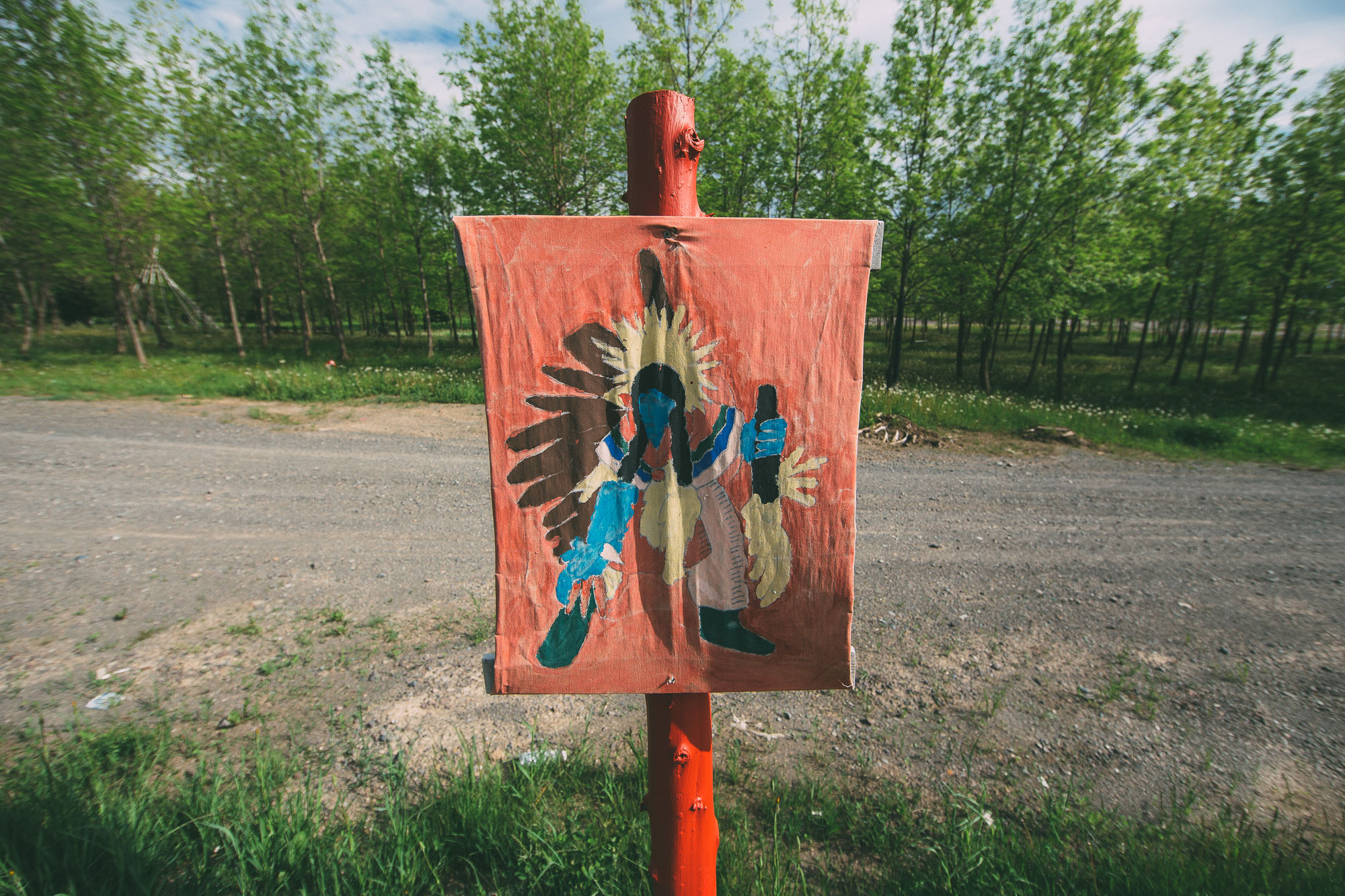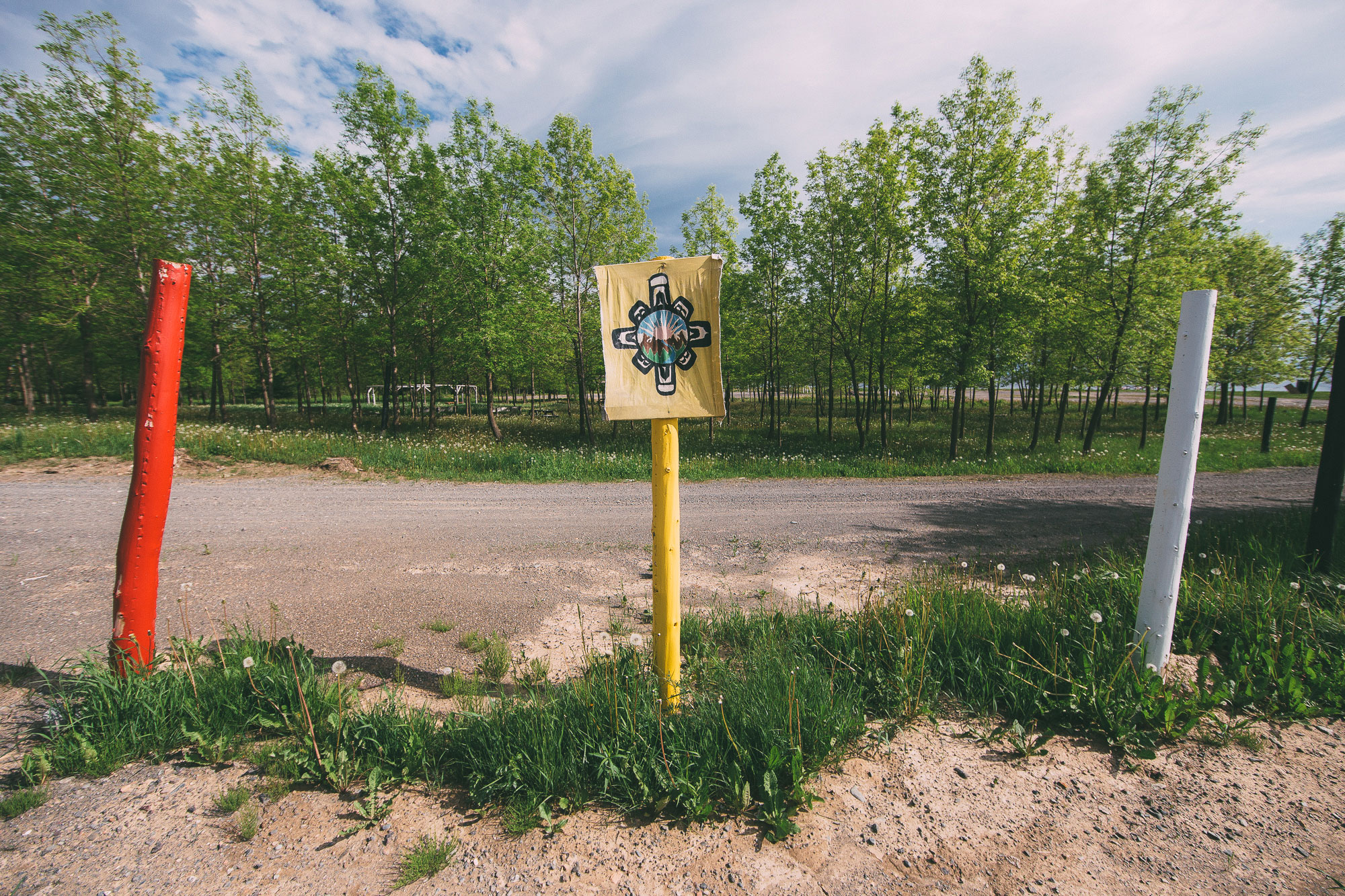I stopped in an administrative building in Gesgapegiag First Nation and unexpectedly found a book titled Nta’tugwaqanminen (Our Story): Evolution of the Gespe’gewa’gi Mi’gmaq.
It was published by Fernwood Press and written through an alliance between the Mi’kmaq of Northern Gespe’gewa’gi (Gaspé Peninsula), their Elders and a group of academic researchers. The book combines, for example, oral histories and traditional teachings with data analysis and archaeological research.
The reason Nta’tugwaqanminen was written, according to one of the co-authors, was to reply to the federal and provincial governments who denied the pre-historical presence of the Mi’kmaq in the Gespe’gewa’gi, to reclaim their history for Mi’kmaq youth, and to speak to non-Indigenous people about Mi’kmaq history and rights. It’s a book intended for confrontation, reclamation, re-appropriation, conciliation and education; and it acts as a way to take control of the narrative of Indigenous presence in eastern Québec.
“There’s a lot of change happening across Canada in the Aboriginal world, and the Mi’kmaq are poised to be at the tip of the change. We wanted to show our young people that all of Gespe’gewa’gi belongs to them, it’s their territory and the history that’s out there is the wrong history. It’s someone else’s story being told. So the Mi’kmaq wanted to tell their story. To tell our story. Troy Jerome, Mi’gmawei Mawiomi Secretariat Executive Director
I looked through Nta’tugwaqanminen and asked to share some excerpts from the foreword because of the context it gave me as I entered the Gaspé Peninsula. This section was written by written by Satsan, one of the Hereditary Chiefs of the Frog Clan and Speaker for the Gitxsan and the Wet’suwet’en Nations during the Delgamuukw-GisdayWe court action in 1984.
If you live in eastern Canada or are interested in Indigenous history and rights you should buy the book here.
“Bringing our history to life is the responsibility of all of our people,” writes Wet’suwet’en. “Our history is a critical part of what defines us, along with our langauges, our homelands and our spirituality. Without these critical components, we lose our identity as distinct peoples. As Indigenous people, we must constantly be reminded of this.
“Since the time of colonization and Confederation in what we now call Canada, our history has been denied. It was not acknowledged or respected by the colonial powers in this country. Our own people had to practice our traditions and cultures underground because of the colonial laws and policies and the systemic racism that tried to wipe us out. These laws and policies are still with us, regulating us from cradle to grave under the Indian Act. Yet we are still here. We are proud of who we are. We are reclaiming our history and our rightful place as owners and caretakers of our territories. Nt’ugwaqanminen is a testimony to this.”
“As we realize that the Indian Act is not the predominant and certainly not the only way to see our land, our rights and our responsibilities, we are now standing up for our sovereignty. We know we have the power and the responsibility to create a better future for our children and future generations.”
“We are now in a new era in terms of our relationship with Canada. We are a third order of government. We have the inherent right to self-government and we have pre-existing sovereignty and the right and will to rebuild our communities and our nations.
“Our histories are now more important than ever. We must remember these stories. We must change the negative, pervasive stories we have told ourselves in recent history. We have now had more than seven generations of stories of pain, anger and suffering. The multi-generational impacts of colonization, the Indian Act, residential schools, the 60s Scoop and many other devastating colonial practices and policies have wounded us and are still with us. Successive governments removed us from our land, outlawed our governments and cultural practices, exploited our languages and tried to destroy our people and history. But they did not destroy us and we have prevailed. We must now start to tell different stories again. Stories of love, power, healing. We can no longer just talk about our history, we must live it.
“For the Gespe’gewa’gi Mi’gmaq who read this history, know that you can be proud of your Nation and everything that has been accomplished. Live your history, reclaim it, and see how you can use this history to rebuild your nation so that you can create a new memory in the minds of your children.”


It was in this book that I found an excerpt of a poem from Lindsay Marshall, former Chief of Potlotek First Nation. We didn’t cycle through Potlotek First Nation, but did share its coastline on Bras d’Or Lake in Cape Breton. I found the poem online and wrote it down to share here.
If you’re interested in reading more of Marshall’s poetry you can buy Clay Pots and Bones here. I read more about the book and it seems like a powerful work: “The collection’s evocation of the past is […] consistently shot through with lamentation and accusation, highlighting the damage wrought by colonialism and its rapacious successor, contemporary capitalism.” Another piece worth reading.
“Dear successive fathers:
Explain to me, please, when did the
change take place, from owners
to wards of the selfish state?
Write down the reasons why
the land under our feet became
foreign soil in perpetuity.
Say again how the signers of
1752 lost as much as they
gained while the ink from a
quill pen rested in its
blackened Royal well.
What justification exists that
allowed our mounds to be
desecrated, clay pots and bones.
Rock glyphs painted over by
cfc-propelled paint.
Our songs and stories protected
by copyright and law, not in the
bosom of our grandmothers or
grandfathers of yesterday.
The cost of keeping us does
not reflect the real cost.
How many ghostly sails with
reeking holds did English
ports comfort in early fog?
Have you much experience in
the destruction of people,
besides us?”
— Chief Lindsay Marshall, Pka’wo’qq aq Waqntal - Clay Pots and Bones
Today we bicycled through Eel River Bar First Nation, the Listuguj Mi’gmaq Government and Gesgapegiag First Nation, and while I was able to have a conversation with someone working on Salaweg in Gesgapegiag, for the most part we travelled through these territories without talking to their inhabitants. This is an attempt to make up for that and share what I’ve learned.